
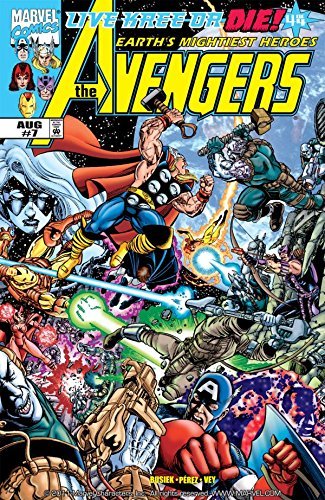

Books in series

Avengers
I Am An Avenger, Vol. 2
2010

Avengers
Die ruhmreichen Rächer
2018

Avengers (1998-2004) #1
1998

Avengers (1998-2004) #7
1998

Avengers (1998-2004) #19
1999

Avengers (1998-2004) #21
1999

Avengers (1998-2004) #25
2000
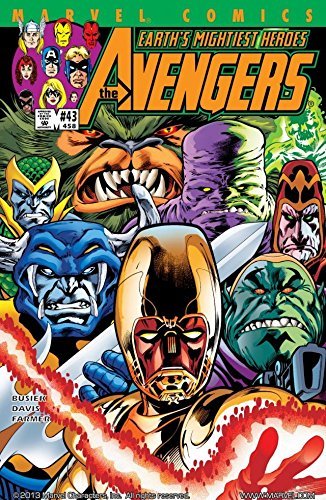
Avengers (1998-2004) #43
2001
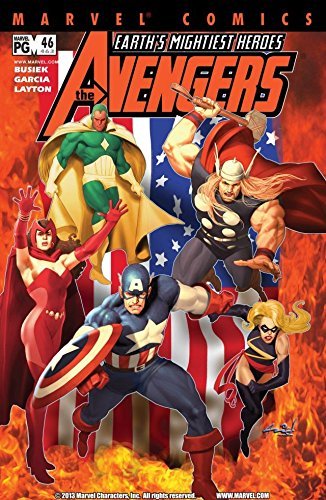
Avengers (1998-2004) #46
2001

Avengers (1998-2004) #47
2001
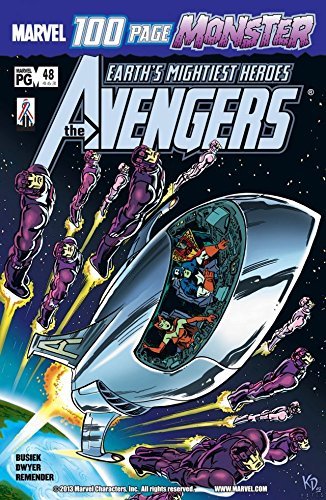
Avengers (1998-2004) #48
2001
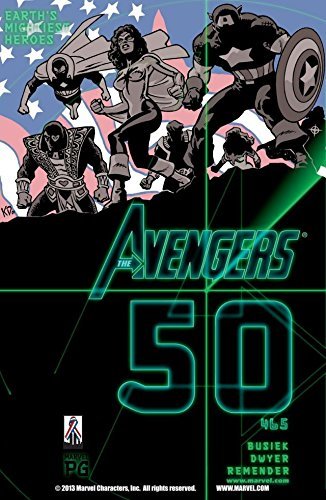
Avengers (1998-2004) #50
2002
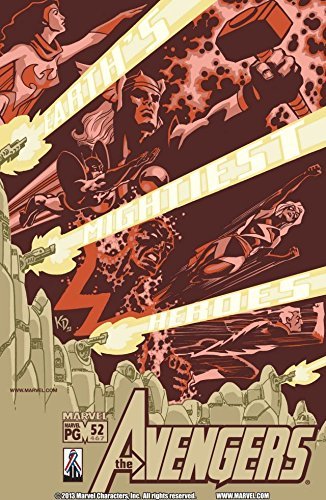
Avengers (1998-2004) #52
2002

Avengers (1998-2004) #56
2002
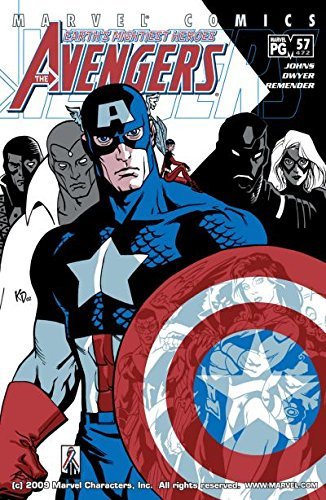
Avengers (1998-2004) #57
2002

Avengers #11
El enfrentamiento
2018
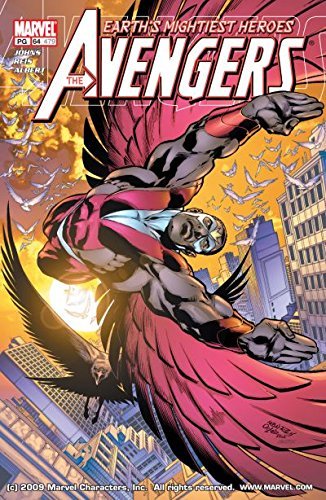
Avengers (1998-2004) #64
2003

Avengers (1998-2004) #72
2003

Avengers (1998-2004) #73
2003

Avengers (1998-2004) #74
2003

Avengers (1998-2004) #75
2004

Avengers (1998-2004) #76
2004

Avengers (1998-2004) #77
2004

Avengers (1998-2004) #78
2004

Avengers (1998-2004) #80
2004
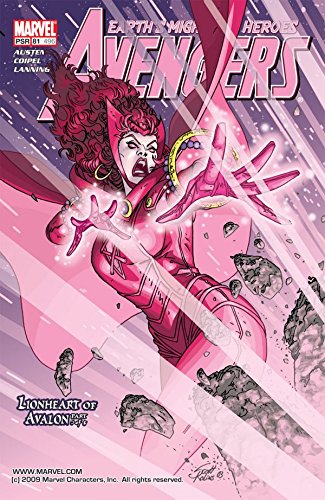
Avengers (1998-2004) #81
2004
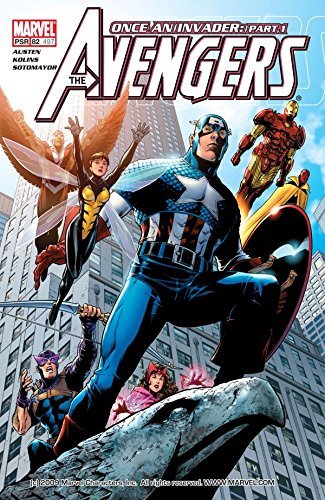
Avengers (1998-2004) #82
2004
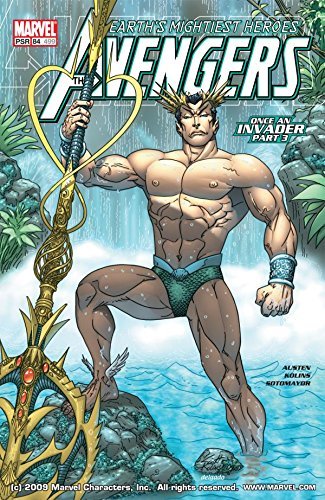
Avengers (1998-2004) #84
2004

Avengers (1998-2004) #500
2010

Avengers (1998-2004) #501
2004

Avengers (1998-2004) #502
2010

Avengers (1998-2004) #503
2010

Avengers (1998-2004) Finale
2004

Avengers
The Morgan Conquest
2000

Marvel Masterworks
The Avengers, Vol. 1
1990

Avengers Assemble, Vol. 2
2005

Avengers Assemble Vol. 2 (Avengers
2005

Avengers
Ultron Unlimited
2000

Avengers, Volume 1
World Trust
2003

Avengers by Geoff Johns
The Complete Collection, Volume 1
2013

Avengers
Red Zone
2003

Avengers
The Search for She-Hulk
2004

Avengers
Disassembled
2006
Authors

Dan Jurgens is an American comic book writer and artist. He is best known for creating the superhero Booster Gold, and for his lengthy runs on the Superman titles Adventures of Superman and Superman (vol. 2), particularly during The Death of Superman storyline. Other series he has been associated with include The Sensational Spider-Man (Vol. 1), Thor (vol. 2), Captain America (vol. 3), Justice League America, Metal Men, Teen Titans (vol. 2), Zero Hour, Tomb Raider: The Series, Aquaman (vol. 3), and the creator of DC Comics' imprint Tangent. Jurgens' first professional comic work was for DC Comics on Warlord #63. He was hired due to a recommendation of Warlord-series creator Mike Grell who was deeply impressed by Jurgens' work after being shown his private portfolio at a convention. In 1984, Jurgens was the artist for the Sun Devils limited series (July 1984 - June 1985), with writers Gerry Conway and Roy Thomas. Jurgens would make his debut as a comic book writer with Sun Devils he began scripting from Conway's plots with #8 and fully took over the writing duties on the title with #10. In 1985, Jurgens created the character Booster Gold, who became a member of the Justice League. His first work on Superman was as penciller for Adventures of Superman Annual #1 (1987). In 1989, Jurgens began working full-time on the character when he took over the writing/pencilling of the monthly Adventures of Superman. Dan Jurgens was the penciller of the 1990–1991 limited series Armageddon 2001 and co-created the hero Waverider with Archie Goodwin. In 1991 Jurgens assumed the writing/pencilling of the main Superman comic book, where he created a supporting hero named Agent Liberty. During his run on Superman, Dan created two major villains, Doomsday and the Cyborg. Doomsday was the main antagonist in the Death of Superman storyline. Jurgens wrote and drew Justice League America for about one year and in 1993 pencilled the Metal Men four-issue miniseries, which was a retcon of their origin story. Jurgens wrote and pencilled the 1994 comic book miniseries and crossover Zero Hour. He wrote and penciled layouts (with finished art by Brett Breeding) to the Superman/Doomsday: Hunter/Prey miniseries, which was a follow-up to the successful Death of Superman storyline. In 1995 Jurgens and Italian artist Claudio Castellini worked on the highly publicized crossover Marvel vs DC. In the same year, he gave up the pencilling duties on Superman. Jurgens scripted and provided layout art for the Superman vs. Aliens miniseries. The story was about a battle between Superman and the aliens created by H. R. Giger (a.k.a. the Xenomorphs), from the Alien film series. It was co-published by Dark Horse Comics and DC Comics in 1995. In January 1996, Jurgens was writer and penciller of the new Spider-Man series, The Sensational Spider-Man (Vol. 1), at Marvel Comics. The title was initially conceived to be the flagship showcase for the new Ben Reilly Spider-Man (it replaced the Web of Spider-Man series). The initial seven issues (#0–6, January–July 1996) were written and pencilled by Jurgens. Jurgens pushed strongly for the restoration of Peter Parker as the true Spider-Man and plans were made to enact this soon, but Bob Harras, the new Editor-in-chief, demanded the story be deferred until after the Onslaught crossover. Jurgens had by this stage become disillusioned with the immense amount of group planning and constant changes of ideas and directions and took this as the last straw, resigning from the title. In a past interview several years after his Spider-Man run, Jurgens stated that he would like to have another chance on the character, since his run was with the Ben Reilly character during the Spider-Man Clone Saga, and not Peter Parker. Jurgens had also written and pencilled Teen Titans (vol. 2) for its entire two year, 24 issue run. New Teen Titans co-creator George Pérez came on board on this incarnation of the Titans as inker for the se


The second of three children, Frank Cho was born in Seoul, Korea in 1971, but moved to the United States at the age of six and was raised in Beltsville, Maryland. Cho received no formal training as an artist. He got his start writing and drawing a cartoon strip called University2 for The Diamondback, the student newspaper at the University of Maryland, College Park. After graduation, Cho adapted elements of this work for use in a professionally syndicated strip, Liberty Meadows.

Artist discovered by Topcow comics. Worked on various comics including Cyberforce, Witchblade, Tales of the Witchblade, Darkness and his creator own title Ascension. He also co-created Aphrodite 9. The artist then moved on to working for Marvel comics including the titles New Avengers, Ultimate X-men, Wolverine covers, and various others. Librarian note: There is more than one author in the GoodReads database with this name

Roy Thomas was the FIRST Editor-in-Chief at Marvel—After Stan Lee stepped down from the position. Roy is a longtime comic book writer and editor. Thomas has written comics for Archie, Charlton, DC, Heroic Publishing, Marvel, and Topps over the years. Thomas currently edits the fanzine Alter Ego for Twomorrow's Publishing. He was Editor for Marvel comics from 1972-1974. He wrote for several titles at Marvel, such as Avengers, Thor, Invaders, Fantastic Four, X-Men, and notably Conan the Barbarian. Thomas is also known for his championing of Golden Age comic-book heroes—particularly the 1940s superhero team the Justice Society of America—and for lengthy writing stints on Marvel's X-Men and Avengers, and DC Comics' All-Star Squadron, among other titles. Also a legendary creator. Creations include Wolverine, Carol Danvers, Ghost Rider, Vision, Iron Fist, Luke Cage, Valkyrie, Morbius, Doc Samson, and Ultron. Roy has also worked for Archie, Charlton, and DC among others over the years.

Stan Lee (born Stanley Martin Lieber) was an American writer, editor, creator of comic book superheroes, and the former president and chairman of Marvel Comics. With several artist co-creators, most notably Jack Kirby and Steve Ditko, he co-created Spider-Man, the Fantastic Four, Thor as a superhero, the X-Men, Iron Man, the Hulk, Daredevil, the Silver Surfer, Dr. Strange, Ant-Man and the Wasp, Scarlet Witch, The Inhumans, and many other characters, introducing complex, naturalistic characters and a thoroughly shared universe into superhero comic books. He subsequently led the expansion of Marvel Comics from a small division of a publishing house to a large multimedia corporation.



Mike Grell (born 1947) is a comic book writer and artist. Grell studied at the University of Wisconsin-Green Bay, the Chicago Academy of Fine Art, and took the Famous Artists School correspondence course in cartooning. His entry into the comics industry was in 1972, as an assistant to Dale Messick on the Brenda Starr comic strip. In 1973 Grell moved to New York, and began his long relationship with DC Comics. His first assignment at DC was on Superboy and the Legion of Super-Heroes, a high-profile assignment for an artist with no prior experience illustrating a monthly comic book. Grell says he got that job because he was walking in the editor's door to ask for work, literally, as the previous artist was walking out the door, having just quit. These stories were written by Cary Bates and Jim Shooter. The Bates/Grell/Shooter run on the title is very well-regarded today by Superboy/Legion fans, who consider it one of the high-water marks in the character/team's history. Grell's work on SATLOSH is widely thought to be some of the best beefcake/cheesecake ever committed to comic book pages, and is affectionately referred to as the 'disco Legion' in retrospect by fans of the title. A writer as well as artist, Grell cemented his status as a fan-favorite with his best-known creation, The Warlord, one of the first sword and sorcery comics, and reportedly the best-selling title published by DC Comics in the late-1970s. The character first appeared in 1st Issue Special #8 (Nov 1975) and was soon given his own ongoing title (The Warlord #1, Jan/Feb 1976). In this book, Air Force pilot Travis Morgan crash-lands in the prehistoric "hidden world" of Skartaris (a setting highly influenced by Jules Verne's A Journey to the Center of the Earth and Edgar Rice Burroughs' Pellucidar). For years thereafter, Morgan engages in adventures dressed only in a winged helmet, wristbands, boots, and breechclout, and armed with a sword and (years before Dirty Harry handled one) a .44 Auto Mag. At DC, Grell also worked on titles such as Aquaman, Batman, and the Phantom Stranger, and with writer Dennis O'Neil on the re-launch of the Green Lantern/Green Arrow series in 1976. [edit] Tarzan Grell wrote and drew the Tarzan comic strip from July 19, 1981 to February 27, 1983 (except for one strip, February 13, 1983, by Thomas Yeates). These strips were rerun in newspapers in 2004 - 2005. [edit] First Comics: Jon Sable Freelance and Starslayer Cover to Jon Sable Freelance #7. Art by Mike Grell.Through the 1980s Grell developed creator-owned titles such Jon Sable Freelance and Starslayer. Jon Sable Freelance was published by the now-defunct First Comics. Starslayer, a space-born science fiction series, started at Pacific Comics, but shifted to First. The titular character of Jon Sable Freelance was a former Olympic athlete, later a African big-game hunter, who became a mercenary. First appearing with a cover date of June 1983, Jon Sable Freelance was a successful non-super-hero comic book in an era when successful non-super-hero comic books were almost unheard of, and a graphically violent comic sold in mainstream comic book stores in an era when such was as rare. Jon Sable was a precursor to what would eventually be called, by some, "the Dark Age of Comics," when even long-established super-heroes would become increasingly grim and violent. The character was heavily influenced by Ian Fleming's James Bond novels as well as drawing on pulp fiction crime stories. Also, many of the stories of Sable's hunting exploits in Africa were influenced by Peter Hathaway Capstick's novels. At a convention in the late 1980s, Grell stated that his idea for Sable was "something like a cross between James Bond and Mickey Spillane's Mike Hammer." Sable was adapted into a short-lived television series and the character's origin tale, "A Storm Over Eden," from the comic book, was expanded and novelized by Grell under the title Sable, which was publ

Alan Davis is an English writer and artist of comic books, known for his work on titles such as Captain Britain, The Uncanny X-Men, ClanDestine, Excalibur, JLA: The Nail and JLA: Another Nail and others. Librarian note: There is more than one author in the GoodReads database with this name

Rob Liefeld is an American comic book writer, illustrator, and publisher. A prominent artist in the 1990s, he has since become a controversial figure in the medium. In the early 1990s, self-taught artist Liefeld became prominent due to his work on Marvel Comics' The New Mutants and later X-Force. In 1992, he and several other popular Marvel illustrators left the company to found Image Comics, which rode the wave of comic books owned by their creators rather than by publishers. The first book published by Image Comics was Rob Liefeld's Youngblood #1. He is married to actress Joy Creel.

Geoff Johns originally hails from Detroit, Michigan. He attended Michigan State University, where he earned a degree in Media Arts and Film. He moved to Los Angeles in the late 1990s in search of work within the film industry. Through perseverance, Geoff ended up as the assistant to Richard Donner, working on Conspiracy Theory and Lethal Weapon 4. During that time, he also began his comics career writing Stars and S.T.R.I.P.E. and JSA (co-written with David S. Goyer) for DC Comics. He worked with Richard Donner for four years, leaving the company to pursue writing full-time. His first comics assignments led to a critically acclaimed five-year run on the The Flash. Since then, he has quickly become one of the most popular and prolific comics writers today, working on such titles including a highly successful re-imagining of Green Lantern, Action Comics (co-written with Richard Donner), Teen Titans, Justice Society of America, Infinite Crisis and the experimental breakout hit series 52 for DC with Grant Morrison, Greg Rucka and Mark Waid. Geoff received the Wizard Fan Award for Breakout Talent of 2002 and Writer of the Year for 2005, 2006, 2007, and 2008 as well as the CBG Writer of the Year 2003 thru 2005, 2007 and CBG Best Comic Book Series for JSA 2001 thru 2005. Geoff also developed BLADE: THE SERIES with David S. Goyer, as well as penned the acclaimed “Legion” episode of SMALLVILLE. He also served as staff writer for the fourth season of ROBOT CHICKEN. Geoff recently became a New York Times Bestselling author with the graphic novel Superman: Brainiac with art by Gary Frank.

Chuck Austen (born Chuck Beckum) is an American humor novelist, comic book writer and artist, TV writer and animator. In comics, he is known for his work on X-Men, War Machine, Elektra, and Action Comics, and in television, he is known for co-creating the animated TV series Tripping the Rift. In his most recent prose novels, Chuck Austen has been going by the name Charles Austen.

James P. "Jim" Starlin is an American comic book writer and artist. With a career dating back to the early 1970s, he is best known for "cosmic" tales and space opera; for revamping the Marvel Comics characters Captain Marvel and Adam Warlock; and for creating or co-creating the Marvel characters Thanos and Shang-Chi, Master of Kung Fu. Death and suicide are recurring themes in Starlin's work: Personifications of Death appeared in his Captain Marvel series and in a fill-in story for Ghost Rider; Warlock commits suicide by killing his future self; and suicide is a theme in a story he plotted and drew for The Rampaging Hulk magazine. In the mid-1970s, Starlin contributed a cache of stories to the independently published science-fiction anthology Star Reach. Here he developed his ideas of God, death, and infinity, free of the restrictions of mainstream comics publishers' self-censorship arm, the Comics Code Authority. Starlin also drew "The Secret of Skull River", inked by frequent collaborator Al Milgrom, for Savage Tales #5 (July 1974). When Marvel Comics wished to use the name of Captain Marvel for a new, different character,[citation needed] Starlin was given the rare opportunity to produce a one-shot story in which to kill off a main character. The Death of Captain Marvel became the first graphic novel published by the company itself. ( In the late 1980s, Starlin began working more for DC Comics, writing a number of Batman stories, including the four-issue miniseries Batman: The Cult (Aug.-Nov. 1988), and the storyline "Batman: A Death in the Family", in Batman #426-429 (Dec. 1988 – Jan. 1989), in which Jason Todd, the second of Batman's Robin sidekicks, was killed. The death was decided by fans, as DC Comics set up a hotline for readers to vote on as to whether or not Jason Todd should survive a potentially fatal situation. For DC he created Hardcore Station.

A comic book writer and erstwhile artist. He has won critical acclaim (including five Eisner Awards) and is one of the most successful writers working in mainstream comics. For over eight years Bendis’s books have consistently sat in the top five best sellers on the nationwide comic and graphic novel sales charts. Though he started as a writer and artist of independent noir fiction series, he shot to stardom as a writer of Marvel Comics' superhero books, particularly Ultimate Spider-Man. Bendis first entered the comic world with the "Jinx" line of crime comics in 1995. This line has spawned the graphic novels Goldfish, Fire, Jinx, Torso (with Marc Andreyko), and Total Sell Out. Bendis is writing the film version of Jinx for Universal Pictures with Oscar-winner Charlize Theron attached to star and produce. Bendis’s other projects include the Harvey, Eisner, and Eagle Award-nominated Powers (with Michael Avon Oeming) originally from Image Comics, now published by Marvel's new creator-owned imprint Icon Comics, and the Hollywood tell-all Fortune and Glory from Oni Press, both of which received an "A" from Entertainment Weekly. Bendis is one of the premiere architects of Marvel's "Ultimate" line: comics specifically created for the new generation of comic readers. He has written every issue of Ultimate Spider-Man since its best-selling launch, and has also written for Ultimate Fantastic Four and Ultimate X-Men, as well as every issue of Ultimate Marvel Team-Up, Ultimate Origin and Ultimate Six. Brian is currently helming a renaissance for Marvel’s AVENGERS franchise by writing both New Avengers and Mighty Avengers along with the successful ‘event’ projects House Of M, Secret War, and this summer’s Secret Invasion. He has also previously done work on Daredevil, Alias, and The Pulse.

Kurt Busiek is an American comic book writer notable for his work on the Marvels limited series, his own title Astro City, and his four-year run on Avengers. Busiek did not read comics as a youngster, as his parents disapproved of them. He began to read them regularly around the age of 14, when he picked up a copy of Daredevil #120. This was the first part of a continuity-heavy four-part story arc; Busiek was drawn to the copious history and cross-connections with other series. Throughout high school and college, he and future writer Scott McCloud practiced making comics. During this time, Busiek also had many letters published in comic book letter columns, and originated the theory that the Phoenix was a separate being who had impersonated Jean Grey, and that therefore Grey had not died—a premise which made its way from freelancer to freelancer, and which was eventually used in the comics. During the last semester of his senior year, Busiek submitted some sample scripts to editor Dick Giordano at DC Comics. None of them sold, but they did get him invitations to pitch other material to DC editors, which led to his first professional work, a back-up story in Green Lantern #162 (Mar. 1983). Busiek has worked on a number of different titles in his career, including Arrowsmith, The Avengers, Icon, Iron Man, The Liberty Project, Ninjak, The Power Company, Red Tornado, Shockrockets, Superman: Secret Identity, Thunderbolts, Untold Tales of Spider-Man, JLA, and the award-winning Marvels and the Homage Comics title Kurt Busiek's Astro City. In 1997, Busiek began a stint as writer of Avengers alongside artist George Pérez. Pérez departed from the series in 2000, but Busiek continued as writer for two more years, collaborating with artists Alan Davis, Kieron Dwyer and others. Busiek's tenure culminated with the "Kang Dynasty" storyline. In 2003, Busiek re-teamed with Perez to create the JLA/Avengers limited series. In 2003, Busiek began a new Conan series for Dark Horse Comics, which he wrote for four years. In December 2005 Busiek signed a two-year exclusive contract with DC Comics. During DC's Infinite Crisis event, he teamed with Geoff Johns on a "One Year Later" eight-part story arc (called Up, Up and Away) that encompassed both Superman titles. In addition, he began writing the DC title Aquaman: Sword of Atlantis from issues 40-49. Busiek was the writer of Superman for two years, before followed by James Robinson starting from Superman #677. Busiek wrote a 52-issue weekly DC miniseries called Trinity, starring Batman, Superman and Wonder Woman. Each issue (except for issue #1) featured a 12-page main story by Busiek, with art by Mark Bagley, and a ten-page backup story co-written by Busiek and Fabian Nicieza, with art from various artists, including Tom Derenick, Mike Norton and Scott McDaniel. Busiek's work has won him numerous awards in the comics industry, including the Harvey Award for Best Writer in 1998 and the Eisner Award for Best Writer in 1999. In 1994, with Marvels, he won Best Finite Series/Limited Series Eisner Award and the Best Continuing or Limited Series Harvey Award; as well as the Harvey Award for Best Single Issue or Story (for Marvels #4) in 1995. In 1996, with Astro City, Busiek won both the Eisner and Harvey awards for Best New Series. He won the Best Single Issue/Single Story Eisner three years in a row from 1996–1998, as well as in 2004. Busiek won the Best Continuing Series Eisner Award in 1997–1998, as well as the Best Serialized Story award in 1998. In addition, Astro City was awarded the 1996 Best Single Issue or Story Harvey Award, and the 1998 Harvey Award for Best Continuing or Limited Series. Busiek was given the 1998 and 1999 Comics Buyer's Guide Awards for Favorite Writer, with additional nominations in 1997 and every year from 2000 to 2004. He has also received numerous Squiddy Awards, having been selected as favorite writer four years in a row from 1995 to 1998,

Jeremiah "Jerry" Ordway is an American writer, penciller, inker and painter of comic books. He is known for his inking work on a wide variety of DC Comics titles, including the continuity-redefining classic Crisis on Infinite Earths (1985–1986), his long run working on the Superman titles from 1986–1993, and for writing and painting the Captain Marvel original graphic novel The Power of Shazam! (1994), and writing the on-going monthly series from 1995-1999. He has provided inks for artists such as Curt Swan, Jack Kirby, Gil Kane, John Buscema and Steve Ditko. Ordway was inspired in his childhood by Marvel Comics, and dreamed of drawing Daredevil, Spider-Man, and Avengers. (To date he has only worked on the latter.) He produced occasional work for Marvel between 1984 and 1988, then returned a decade later to write and illustrate a three-issue arc of Avengers (vol. 3) #16-18 (1999), as well as penciling the four-issue crossover mini-series Maximum Security (#1-3 and prologue Dangerous Planet) in 2000-2001. In 1986, along with writer/artist John Byrne and writer Marv Wolfman, Ordway was one of the architects trusted with revamping Superman, in the wake of the Ordway-inked continuity-redefining maxiseries Crisis on Infinite Earths. Launching, with a revised origin and new continuity, in Byrne's miniseries, The Man of Steel, Superman soon returned to featuring in a number of titles. After the titular title Superman was cancelled and replaced with Man of Steel, it was swiftly relaunched as Adventures of Superman, continuing the numbering of the original Superman comic, with Wolfman as writer and Ordway as primary artist. When Wolfman departed the title, John Byrne briefly took over scriptwriting duties before Ordway assumed the mantle of writer-artist and took over the series solely. Switching from Adventures of Superman, Ordway took over as writer-artist on the companion title Superman (vol. 2) between 1989 and 1991, before later returning to Adventures.. as writer. While writing for the Superman family of titles, he helped devise the epic "Death of Superman" storyline in 1992. After seven years working on the character, Ordway largely left the Superman titles in 1993, although he would make frequent returns to the character as writer and artist throughout his career. In 1994, Ordway masterminded the return of the original Captain Marvel to the DC Universe with the 96-page hardcover graphic novel The Power of Shazam!, which he both wrote and painted. The story saw Ordway depict the revamped origins of the former-Fawcett Comics superhero. An early example of the one-shot Original Graphic Novel, it proved to be a success, and was followed by an on-going monthly series, also titled The Power of Shazam! (which ran between 1995 and 1999). Ordway wrote and provided painted covers for the entire run of the regular series, as well as illustrating fill-in issues between series-regular artists Peter Krause and Mike Manley. Towards the end of the series run, he again took on the dual role of writer & artist. For Image Comics, Ordway co-created the character WildStar (with Al Gordon) in 1993, and published his creator-owned one-shot The Messenger in July 2000.

Jim Valentino is an American writer, penciler, editor and publisher of comic books. He is a co-founder of Image Comics and served as the company's publisher from 1999-2004. Jim created such diverse series as normalman, A Touch of Silver, Vignettes and ShadowHawk. He also wrote and drew Guardians of the Galaxy for Marvel Comcs. He currently heads his own imprint at Image called Shadowline which publishes Rat Queens, Faster Than Light, Jimmie Robinson, Ted McKeever and more.

